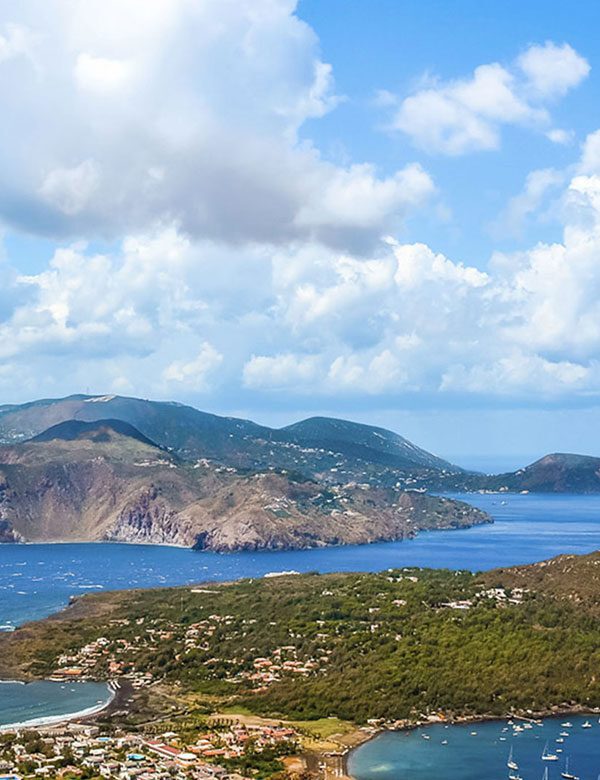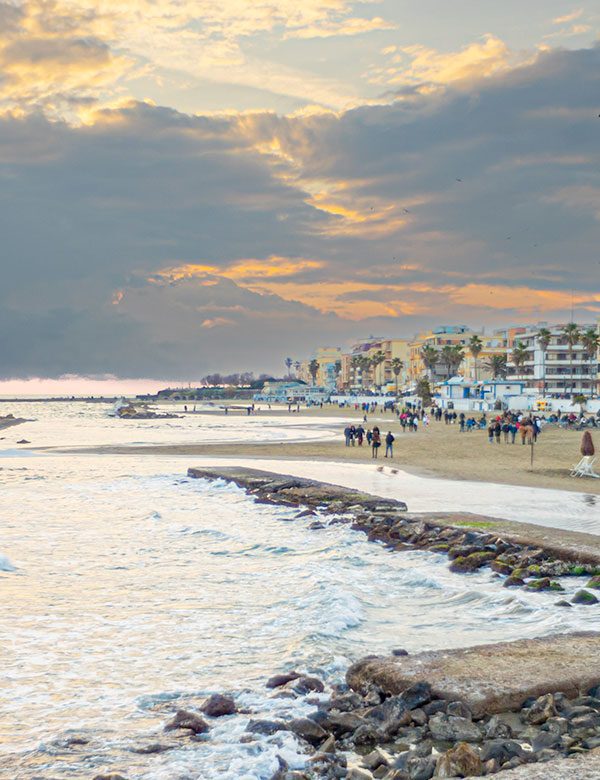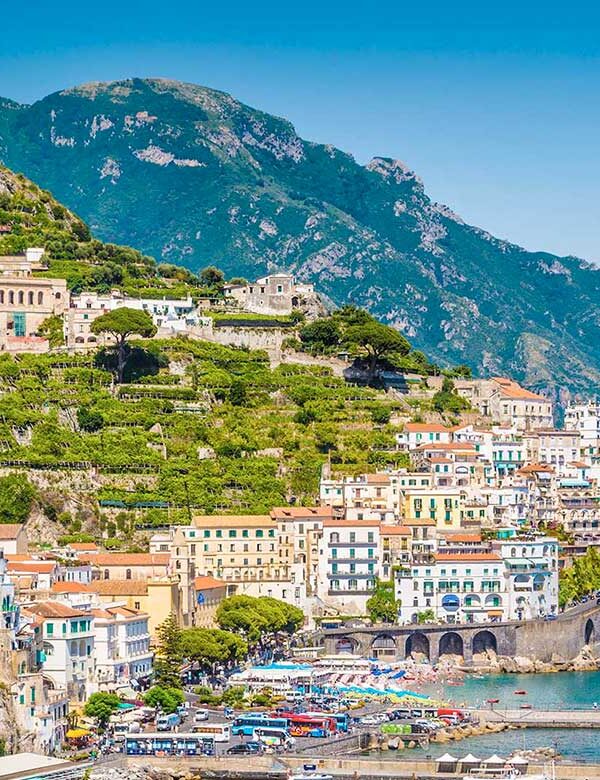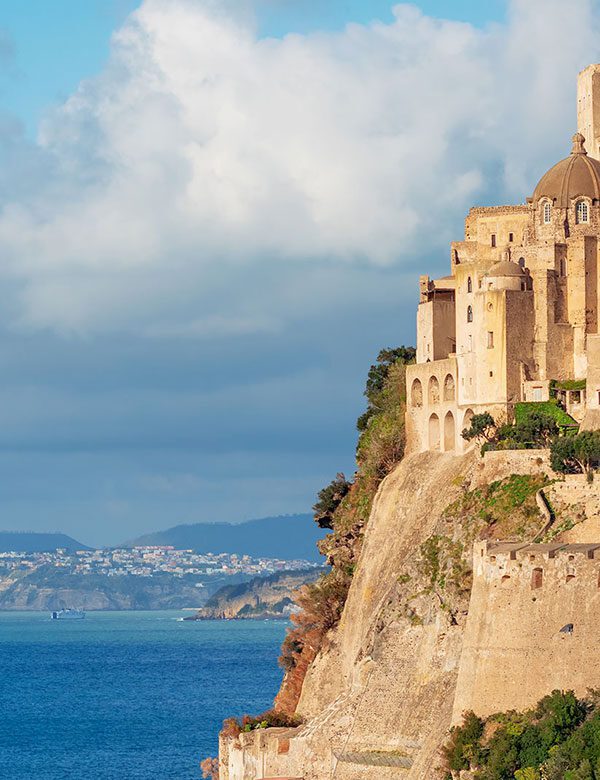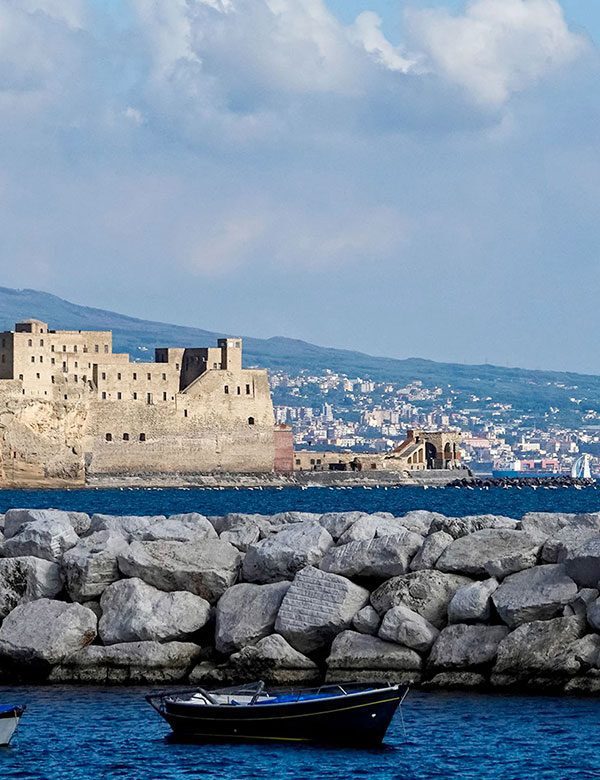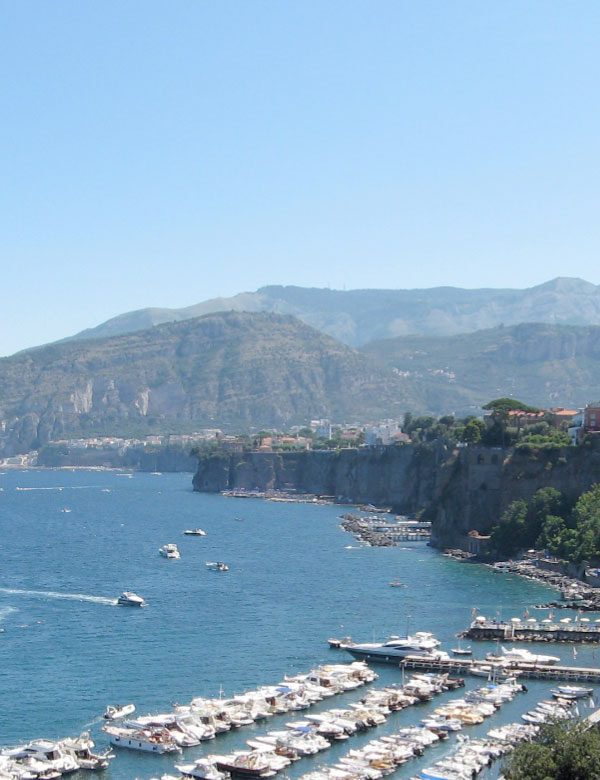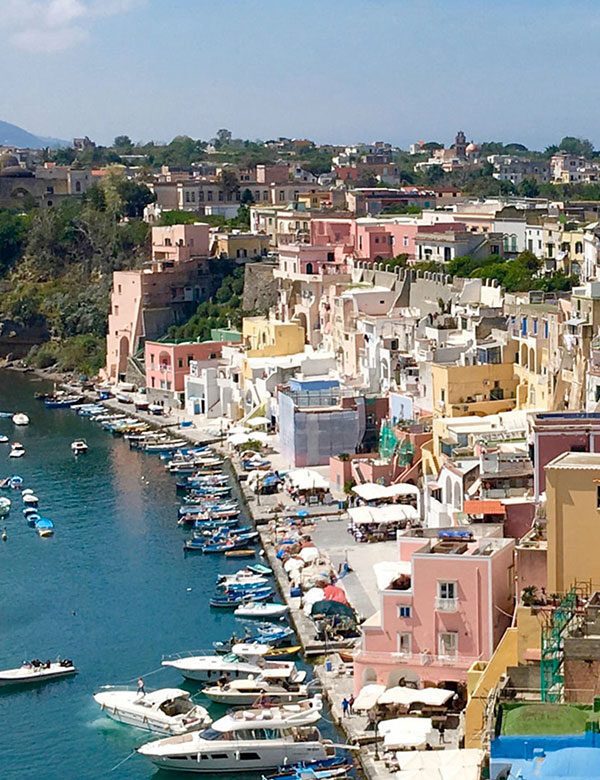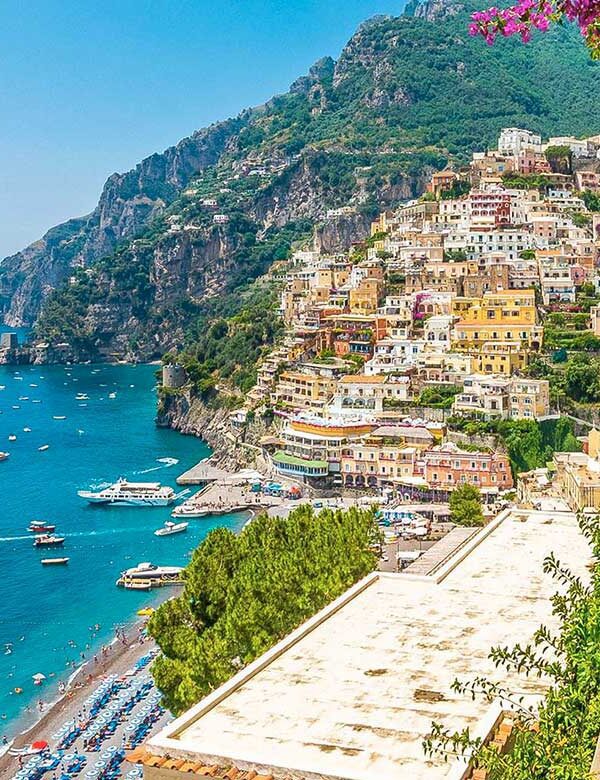Amalfi
A small town that in history has made a fundamental contribution to the art of navigation in the Mediterranean. Since the landing in the harbor and from the first steps in the Piazzale dei Protontini, Amalfi reveals its identity inextricably linked to the sea, which spreads its salty scent everywhere among the alleys, in the porticoes and in the picturesque little squares of a historic center prodigal of continuous suggestions. It can be accessed directly from the Cavalieri seafront promenade, close to the welcoming Spiaggia Grande of sand and small pebbles, an ideal stop for a regenerating swim before exploring the heart of the ancient Maritime Republic. A visit is to be made strictly on foot, ascending and descending the numerous stairs that connect the main points of interest.
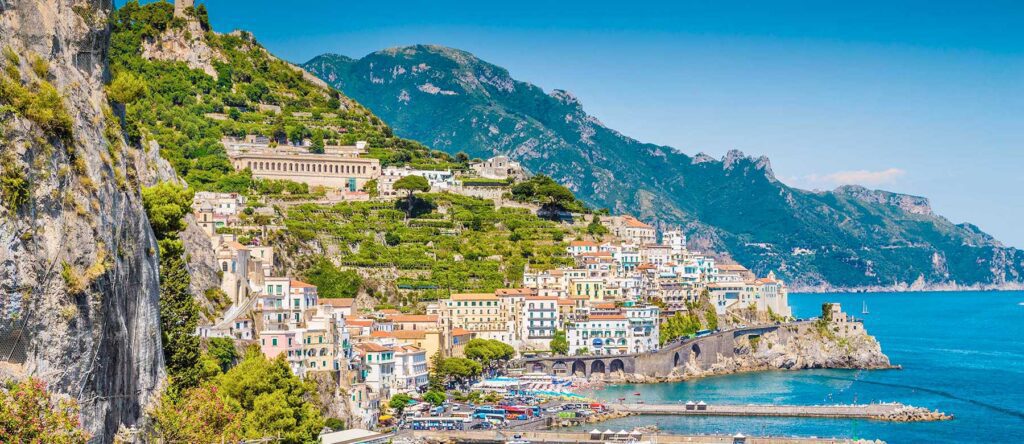
The statue of the patron saint St. Andrew identifies Piazza Municipio, dominated by the Town Hall, in the ancient Benedictine convent dedicated to the Holy Trinity, where, on the second floor, is located the Museo Civico, which tells the story of Amalfi. A short distance away is the venerated church of Santa Maria Maggiore, built by Duke Mansone I in 986, when Amalfi was an economic and military power. Each route leads into the town's living room of Piazza Duomo, where you can admire the Cathedral of St. Andrew, a symbol of Amalfi in the world with its monumental black-and-white facade embellished with Moorish and neo-Gothic motifs and a fine mosaic.
The most famous and scenic of Amalfi's staircases lead inside the six-aisled Romanesque temple, built in 987 by Duke Mansone I and named after St. Andrew in 1208, when the body of the apostle who had arrived from the Holy Land was buried in the sumptuous crypt full of works of art. Attached to the cathedral is the Cloister of Paradise, the thirteenth-century cemetery of the nobles with important frescoes also by the school of Giotto. Opposite the cloister rises the bell tower, in Romanesque style with Moorish elements. Also part of the cathedral's monumental complex is the 13th-century Basilica of the Crucifix, home to the Museum of Sacred Art, which holds the cathedral's treasure. Another characteristic monument in the medieval Piazza Duomo is the 18thcentury Fontana del Popolo or Fountain of St. Andrew, with its marble statue of the patron saint. Among the many sub-porticos that characterize Amalfi's typical urban layout, that of Marina Piccola stands out for the Porta della Marina, the ancient Porta de Sandala, where a famous ceramic panel by Renato Rossi can be admired.
Right there is the church of Santa Maria a Piazza, with an important Byzantine painting of the Black Madonna. Beyond the Porta della Marina you reach the old Arsenal, where the galleys of the Republic were built. Today it houses the Museum of the Compass and the Maritime Duchy of Amalfi with the most significant exhibits of the city's maritime history such as the "Tabula de Amalpha" and ancient navigational instruments. The galleon of the historical regatta of the Maritime Republics is also preserved there. Worth visiting is the Rione Vagliendo la, a synthesis of all the characteristics of the ancient settlement of Amalfi. There are the remains of the Church of San Bartolomeo and a 12th-century Moorish " Domus " there. In Largo Spirito Santo is the Paper Museum, dedicated to the centuries-old history of Amalfi's famous paper. From there begins the area of the ancient paper mills, in the so-called Valley of the Mills. Starting instead from the city's Western Gate, there is a magnificent view from Via Annunziatella. Also worth seeing is the 11th-century Church San Nicola dei Greci, with a Moorish-style port and close to the center is the Spiaggia delle Sirene. Other Amalfi beaches can be reached by sea. Such as the famous Emerald Grotto, spectacular for its giant stalactites and stalagmites, but especially for its particular green coloring, due to the reflection of the sun, which penetrates it from a fissure in the rock located below sea level.
 Hello Alilauro 0814972238
Hello Alilauro 0814972238 








